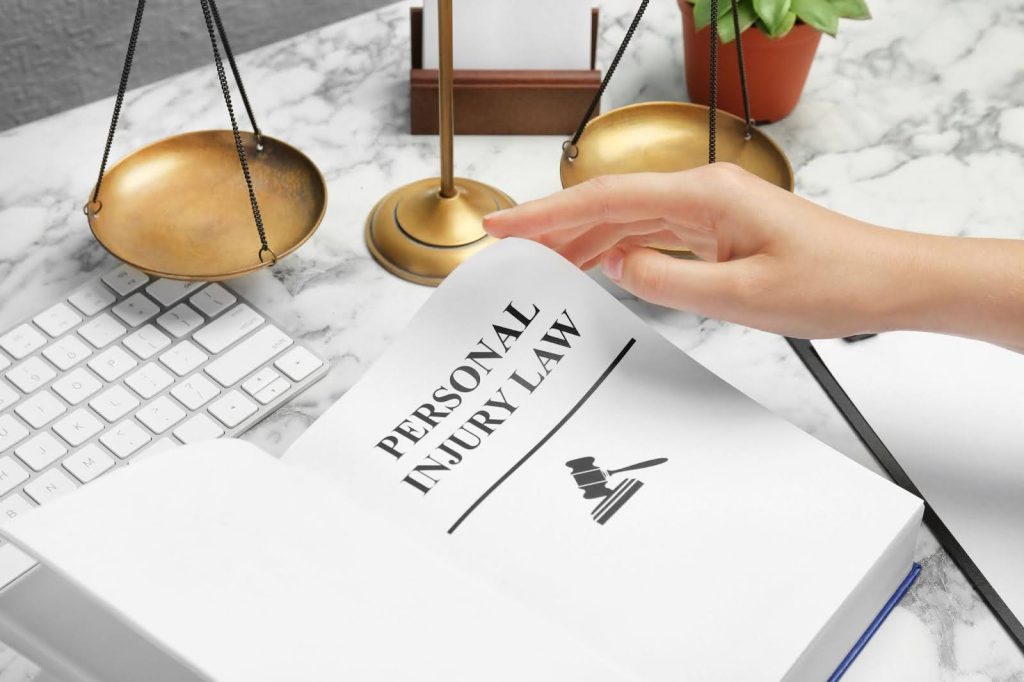
Standing out in the competitive world of personal injury law requires more than legal expertise—it demands a strong online presence. With potential clients increasingly turning to search engines to find legal help, leveraging local SEO and targeted blog strategies has become essential for law firms. These tools not only improve visibility but also build trust and authority in the community.
By optimizing for local searches and crafting informative, client-focused blogs, personal injury practices can connect with their audience more effectively. These strategies drive organic traffic, enhance credibility, and position firms as go-to resources for legal guidance.
How Local SEO Brings Personal Injury Lawyers Closer to Clients
Local SEO enhances visibility for personal injury lawyers by targeting search queries specific to their geographic area. When individuals seek legal help, they often search with location-based terms, such as “personal injury lawyer near me.” Optimizing for these queries ensures law firms appear prominently in local search results, improving their chances of being chosen.
Google Business Profile (GBP) is essential for local SEO. A fully optimized GBP listing showing accurate business details, such as address, phone number, and office hours, helps potential clients find information quickly. Reviews on GBP significantly impact visibility; attorneys with numerous positive reviews rank higher in local searches and instill trust in their community.
Localized keywords paired with well-designed website content further enhance a firm’s search ranking. For instance, including terms like “car accident attorney in Dallas” in service pages and metadata captures geographically-targeted traffic. Location landing pages also serve as valuable tools for detailing services in specific areas, driving relevance for local searches.
Citations in local directories strengthen a law firm’s credibility. Ensuring consistent business information across platforms like Yelp, Avvo, and legal directories increases visibility in search engines and builds trust with potential clients searching for reliable representation.
Creating Blog Content That Builds Trust and Authority
Blog content for personal injury law firms can establish authority by addressing common client concerns. Answering frequently asked questions like “What should I do after a car accident?” or “How long does a personal injury case take?” positions the firm as a credible resource. When blogs focus on specific personal injury blog topics, they attract clients seeking actionable information.
Case studies highlighting successful outcomes build trust. Sharing anonymized client success stories demonstrates experience and offers tangible examples of expertise. To grow a law firm’s reach, blogs can also explore trending local issues, such as changes in state liability laws or common accident statistics in the area.
Including legal tips and detailed accident scenario breakdowns enhances engagement. Providing step-by-step advice, such as documenting injuries or filing claims, ensures readers find value. Incorporating client-centric language further aligns with potential client needs, strengthening connections and fostering credibility.
Harnessing Long-Tail Keywords for Niche Search Success
Long-tail keywords target specific, less competitive search queries aligned with potential clients’ intent. Personal injury practices benefit by focusing on terms describing unique services or scenarios, such as “accident lawyer for Uber drivers” or “slip and fall attorney in [city name].” These phrases address niche searches, attracting qualified leads actively seeking specialized legal help.
Identifying relevant long-tail keywords helps personal injury lawyers anticipate client queries. Tools like Google Keyword Planner or SEMrush reveal search volume and competition for targeted terms. Including these phrases in blog titles, headings, and body content increases the chance of ranking higher for specific searches. For instance, incorporating “personal injury blog topics on workplace accidents” could drive targeted traffic to a law firm’s site.
Localized long-tail keywords further enhance visibility. Phrases like “bike accident lawyer in downtown Boston” combine niche focus with geo-targeting, connecting lawyers with local clients. Personal injury firms grow through strategic long-tail keyword integration, leading to higher engagement and improved case acquisition rates. Regularly updating blogs with variations of these keywords ensures continued relevance and sustained traffic.
The Role of Mobile Search in Personal Injury Marketing
Mobile search plays a critical role in attracting clients for personal injury law firms. Over 63% of Google searches originate from mobile devices, making it essential for law firms to optimize their websites for mobile usability. A mobile-friendly site improves user experience, increases engagement, and boosts rankings in mobile search results. Key elements include responsive design, fast loading speeds, and clear call-to-action buttons like “Contact Us” or “Schedule a Free Consultation.”
“Near me” searches, such as “personal injury lawyer near me,” dominate mobile queries. Optimizing for these searches with localized keywords and a well-structured Google Business Profile (GBP) enhances visibility for mobile users. Including accurate location details, office hours, and client reviews on GBP increases trust and helps convert mobile searchers into paying clients.
Personal injury blog topics that address urgent legal questions, such as “What to do after an accident?” or “How much is my case worth?” tend to perform better on mobile. Short, skimmable content with headings and bullet points ensures readability on smaller screens, catering to users looking for quick answers on the go. Direct links from blogs to consultation forms simplify the inquiry process and capture leads instantly.
Voice search usage is growing among mobile users, with queries like “Who’s the best personal injury lawyer in [city]?” or “Law firm nearby open now.” Optimizing content for conversational keywords and ensuring your law firm appears in local voice search results increases accessibility for potential clients.
Using Social Proof to Boost Local SEO Efforts
Social proof strengthens local SEO by establishing trust and authority through client-driven feedback and engagement. Positive client reviews, testimonials, and successful case outcomes enhance online reputation and influence search rankings. For instance, reviews on platforms like Google Business Profile (GBP) directly impact local search visibility, making it easier for potential clients to find personal injury law firms.
Encouraging clients to leave reviews after resolving cases improves credibility and signals quality to both search engines and visitors. Responding to reviews, whether positive or negative, showcases professionalism and commitment to client satisfaction. High-scoring ratings and detailed testimonials describing favorable case experiences resonate with prospective clients, encouraging them to consider the firm for legal representation.
Case studies and success stories shared on personal injury blogs reinforce social proof. Discussing resolved cases (with client permission and anonymized details) highlights expertise while addressing client concerns. These stories, combined with practical insights into personal injury blog topics such as “navigating insurance claims” or “common slip-and-fall case pitfalls,” position the firm as authoritative and trustworthy.
Social media platforms further amplify social proof by providing spaces for sharing client feedback and firm achievements. Sharing client shoutouts, awards, or community involvement posts on channels like Facebook or LinkedIn increases engagement and creates additional opportunities for visibility in local searches. Social proof integrated across multiple platforms strengthens SEO visibility and attracts potential clients, enhancing efforts to grow law firms in competitive markets.
Tips for Structuring Legal Blogs for Search Engine Optimization
- Craft Engaging Titles
Use clear, attention-grabbing titles that include relevant keywords like “Personal Injury Blog Topics.” Titles should indicate the content’s value to readers and align with search intent. For example, “What To Do After a Car Accident: Legal Tips” targets specific concerns and boosts relevance for search engines. - Prioritize Keyword Placement
Incorporate primary and long-tail keywords in blog titles, meta descriptions, subheadings, and the first 100 words of content. For instance, using “ Grow Law Firm“ or “personal injury lawyer in [city]” in headings and introductory paragraphs ensures strong visibility for local SEO. - Structure Content With Subheadings
Divide blogs into coherent sections using concise, keyword-rich subheadings. Subheadings improve readability, enhance SEO rankings, and help search bots understand the context. For instance, H2 subheadings like “Common Causes of Slip and Falls in [City]” clarify focus and improve user engagement. - Use Internal Links to Strengthen Authority
Link to related pages or blogs within the website. Adding contextual links like “Read more about filing personal injury claims in [City]” improves site navigation, spreads SEO equity, and keeps users engaged longer. - Optimize for Readability
Write concise paragraphs with simple language. Use bullet points, numbered lists, and short sentences to enhance skimming. Readable blogs align with mobile SEO, meeting the needs of users searching from mobile devices. - Incorporate Multimedia Elements
Add high-quality images, infographics, or videos to blogs. These elements increase engagement and dwell time, indicators that positively influence rankings. For example, including a flowchart demonstrating the steps in a personal injury claim can provide clearer understanding for readers. - Tailor Blogs to User Intent
Address common client queries with actionable information. For instance, blogs focusing on “What Evidence Do I Need for a Successful Personal Injury Lawsuit?” solve specific user problems, increasing the likelihood of conversions and satisfaction. - Add Meta Descriptions and Alt Text
Write concise meta descriptions containing keywords, summarizing the blog’s content. Alt text for images should describe visuals with relevant contextual keywords like “personal injury lawyer advising a client” for better accessibility and SEO impact. - End With Strong Calls to Action
Clearly guide readers to next steps. Use phrases like “Contact Our Team Today for a Free Consultation” or “Explore More Personal Injury Blog Topics” to encourage interactions, driving leads and supporting client acquisition goals.
Leveraging Video Blogs to Attract Local Clients
Video blogs enhance engagement by offering visual content that resonates with local audiences. Personal injury lawyers can use videos to simplify complex topics, such as the legal process for filing claims or common mistakes after an accident. Videos addressing frequently searched personal injury blog topics, like “what to do after a car accident in [city],” attract viewers seeking location-specific guidance.
Adding localized elements, such as mentioning a city’s landmarks or regional accident statistics, personalizes the content and improves local SEO. For example, a video titled “Understanding Slip and Fall Liability in [City Name]” can target potential clients conducting city-based searches. Including captions optimized with long-tail keywords, such as “personal injury lawyer downtown,” ensures accessibility and relevance.
Publishing success stories through video testimonials builds credibility and trust. A satisfied client sharing their experience with a local law firm’s support demonstrates results while creating persuasive, relatable content. Hosting these videos on platforms like YouTube or embedding them in blogs amplifies visibility and strengthens the law firm’s strategy to grow.
Interactive formats, such as live Q&A sessions about local personal injury laws, promote real-time engagement. Share announcements about these events on social media, using hashtags specific to the area to reach a broader local audience.
Analyzing Local Competitors for Better SEO Strategies
Evaluating competitors’ online strategies provides insights for improving a law firm’s local SEO approach. Personal injury lawyers can identify strengths and gaps by studying competitors who rank well for targeted search terms, such as “personal injury lawyer in [city name].”
Assessing Google Business Profiles
Examining competitors’ Google Business Profiles (GBP) helps reveal critical optimization tactics. Focus areas include review quantity and quality, business descriptions, categories, and responses to client feedback. Competitors with consistent positive reviews often dominate local search rankings. Highlighting similar strengths can enhance a law firm’s GBP visibility.
Reviewing Website Content
Analyzing competitor websites uncovers content gaps and potential opportunities. Look at blog categories, landing pages, and keywords used to target personal injury blog topics, such as specific accident types or local legal advice. High-ranking competitors often optimize content with location-rich terms and client-focused language. By addressing uncovered topics, like region-specific concerns or FAQs, firms can boost content relevancy.
Analyzing Backlink Profiles
Examining backlinks of top competitors reveals link-building strategies. Competitors might gain backlinks through local organizations, news features, or legal directories. Using tools like Ahrefs or SEMrush, law firms can identify valuable backlink sources and pursue similar opportunities to grow their own link profile.
Evaluating Social Media Strategies
Competitors’ social media engagement levels showcase how they connect with local audiences. Look for interaction patterns, shared blog posts, video content, and community-centered campaigns. Replicating successful actions, such as promoting case outcomes or frequently sharing personal injury blog topics, amplifies engagement and social proof elements.
Monitoring Keyword Usage
Tracking competitors’ keyword strategies exposes valuable search terms overlooked by others. For instance, tools like Ubersuggest help identify local and long-tail keywords competitors rank for, creating opportunities for differentiation. Using these insights to refine strategy supports long-term traffic growth and increased visibility.
Staying Ahead of Google’s Algorithm Updates in 2025
Monitoring algorithm changes helps personal injury law firms maintain high search rankings. Google frequently updates its algorithms to improve search accuracy and user experience. Law firms should stay informed about these updates to adapt strategies effectively. Following reputable sources like Google Search Central and subscribing to SEO newsletters ensures timely awareness.
Updating content regularly aligns with evolving search priorities. Personal injury blogs can maintain relevance by incorporating fresh insights, adding case updates, or revising keyword usage. Consistent updates signal value to search engines, positively impacting rankings.
Focusing on user intent enhances blog performance amidst algorithm shifts. Algorithms increasingly prioritize content that matches searchers’ specific needs. Personal injury blog topics like “what to do after a car accident” or “steps for filing a personal injury claim” address common legal concerns and deliver actionable guidance, improving reader engagement and SEO outcomes.
Strengthening technical SEO supports adaptability. Features like mobile-friendliness, structured data, and faster site speeds resonate well with updated algorithms. Law firms optimizing their sites for technical compliance reduce potential penalties and create a seamless experience for visitors.
Diversifying content formats aids in navigating unpredictable algorithmic changes. Integrating text, video, and infographics into personal injury blogs meets varied user preferences and mitigates ranking disruption. Video content explaining legal processes or sharing client success stories can boost traffic and engagement by appealing to broader audiences.
Tracking SEO Metrics to Optimize Personal Injury Campaigns
To maximize the impact of local SEO and blog strategies, personal injury law firms should consistently track key performance metrics. Monitoring website traffic, keyword rankings, and conversion rates provides valuable insights into what’s working and where adjustments are needed. Tools like Google Analytics and SEMrush can help identify trends and measure the success of targeted efforts.
Analyzing metrics such as click-through rates, bounce rates, and time spent on pages reveals how effectively content engages potential clients. Regularly reviewing these data points ensures strategies remain aligned with client needs and search engine algorithms. By staying proactive and data-driven, law firms can refine their approach, strengthen their online presence, and continue to attract and convert local clients effectively.








